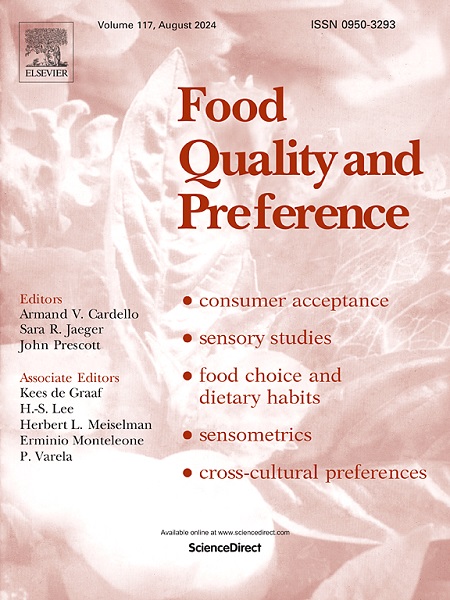Consumer perceptions of nutrition labeling on alcoholic beverages
IF 4.9
1区 农林科学
Q1 FOOD SCIENCE & TECHNOLOGY
引用次数: 0
Abstract
A recent U.S. government proposal aims to mandate expanded nutrition labeling on alcoholic beverages. The rule could improve consumer awareness, but much remains unknown about consumers' perceptions of this labeling initiative. This study utilizes survey data from 769 U.S. beer drinkers to understand consumer perceptions of nutrition labeling, their current knowledge about the calorie content of different beers, and their beliefs about how the reform should be implemented. The results suggest that most consumers believe alcoholic beverages should include nutrition information, such as total calories and macronutrients, and that they may use this information to inform their purchasing decisions. Additionally, consumers consistently underestimate the calorie content of some popular beers. While this highlights existing misperceptions and could lend credence to calls for heightened nutrition labeling, each beer included in the study already bears this information. The fact that most consumers are unaware of the calorie count in products that already communicate nutrition facts suggests that labeling alone may not increase consumer awareness as much as the policy hopes. Lastly, many consumers support greater flexibility for small breweries during the transition, but communicating nutrition facts through a QR code is not a popular option. These results can inform industry decision-making and political discourse on the relationship between transparency in nutrition labeling, consumer preferences, and the challenges small producers face in adjusting to regulatory changes.
消费者对酒精饮料营养标签的认知
美国政府最近的一项提案旨在强制要求扩大酒精饮料的营养标签。该规定可以提高消费者的意识,但消费者对这一标签倡议的看法仍然未知。本研究利用769名美国啤酒饮用者的调查数据来了解消费者对营养标签的看法,他们目前对不同啤酒卡路里含量的了解,以及他们对如何实施改革的看法。结果表明,大多数消费者认为酒精饮料应该包括营养信息,如总热量和常量营养素,他们可以使用这些信息来告知他们的购买决定。此外,消费者一直低估了一些受欢迎啤酒的卡路里含量。虽然这凸显了现有的误解,并可能为加强营养标签的呼吁提供证据,但研究中包括的每种啤酒都已经包含了这些信息。事实上,大多数消费者都不知道已经标明营养成分的产品中的卡路里含量,这表明,仅靠标签可能不会像政策所希望的那样提高消费者的意识。最后,许多消费者支持小啤酒厂在转型过程中有更大的灵活性,但通过二维码传达营养成分并不是一个受欢迎的选择。这些结果可以为行业决策和政治话语提供信息,说明营养标签透明度、消费者偏好和小生产者在适应监管变化时面临的挑战之间的关系。
本文章由计算机程序翻译,如有差异,请以英文原文为准。
求助全文
约1分钟内获得全文
求助全文
来源期刊

Food Quality and Preference
工程技术-食品科技
CiteScore
10.40
自引率
15.10%
发文量
263
审稿时长
38 days
期刊介绍:
Food Quality and Preference is a journal devoted to sensory, consumer and behavioural research in food and non-food products. It publishes original research, critical reviews, and short communications in sensory and consumer science, and sensometrics. In addition, the journal publishes special invited issues on important timely topics and from relevant conferences. These are aimed at bridging the gap between research and application, bringing together authors and readers in consumer and market research, sensory science, sensometrics and sensory evaluation, nutrition and food choice, as well as food research, product development and sensory quality assurance. Submissions to Food Quality and Preference are limited to papers that include some form of human measurement; papers that are limited to physical/chemical measures or the routine application of sensory, consumer or econometric analysis will not be considered unless they specifically make a novel scientific contribution in line with the journal''s coverage as outlined below.
 求助内容:
求助内容: 应助结果提醒方式:
应助结果提醒方式:


